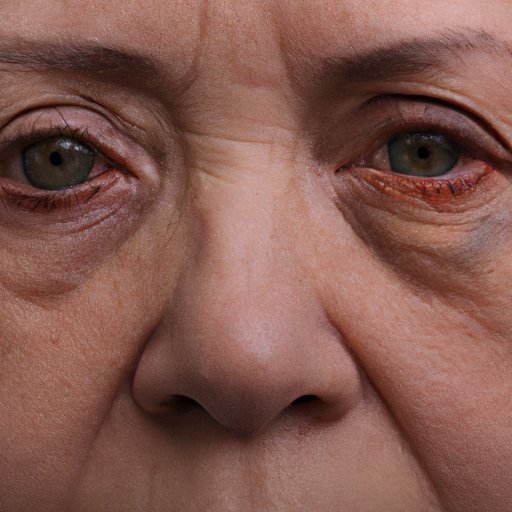Introduction:
TED Eye Disease, also known as thyroid eye disease or Graves’ ophthalmopathy, is a condition that affects the eyes of individuals with thyroid conditions. It is an autoimmune disorder that occurs when the immune system attacks the tissues and muscles around the eyes, causing inflammation and eye problems such as diplopia (double vision), protruding eyes, and eye pain.
It is important to understand the symptoms, causes, and treatment options of TED Eye Disease, as it can significantly impact the quality of life of affected individuals and may lead to irreversible vision loss if left untreated. This article aims to provide a comprehensive overview of TED Eye Disease and help patients and their loved ones better understand the condition.
Understanding TED Eye Disease: Symptoms, Causes and Treatment Options
The symptoms of TED Eye Disease can vary depending on the severity and stage of the condition. Some common symptoms include:
- Protruding eyes, also known as exophthalmos
- Double vision or blurred vision
- Dry eyes or excessive tearing
- Eye pain or discomfort
- Sensitivity to light
- Limited eye movement
The exact causes of TED Eye Disease are not yet fully understood. However, researchers believe that the condition is caused by a combination of genetic and environmental factors. It is also commonly associated with autoimmune thyroid disease, particularly Graves’ disease. Individuals with higher levels of thyroid hormone or antibodies may be at a greater risk of developing TED Eye Disease.
Diagnosis of TED Eye Disease typically involves a physical examination of the eyes and tests such as imaging scans and blood tests to assess the thyroid and immune system function. Treatment options for TED Eye Disease may vary depending on the severity of the condition and the specific symptoms experienced by the patient.
Treatment options may include medication to manage symptoms such as pain and swelling, surgery to correct eye alignment or relieve pressure on the eye muscles, and radiation therapy to reduce inflammation in the eye tissues. In some cases, a combination of treatments may be used. It is important to consult with a healthcare professional to determine the most appropriate course of action for individual cases.
TED Eye Disease: What Every Patient Should Know
Given the potential impact on vision and quality of life, it is important for patients with TED Eye Disease and their loved ones to have a comprehensive understanding of the condition. Some key things to know about TED Eye Disease include:
- TED Eye Disease is a condition that affects the eyes of individuals with thyroid conditions.
- TED Eye Disease is an autoimmune disorder that occurs when the immune system attacks the tissues and muscles around the eyes.
- Symptoms of TED Eye Disease can include double vision, protruding eyes, and eye pain.
- Diagnosis of TED Eye Disease involves a physical examination of the eyes and tests such as imaging scans and blood tests.
- Treatment options for TED Eye Disease may vary depending on the severity of the condition and the specific symptoms experienced by the patient.
It is also important to be aware of common misconceptions surrounding TED Eye Disease and to know how to talk to your healthcare provider about the condition.
The Impact of TED Eye Disease on Thyroid Patients
Given the strong association between TED Eye Disease and autoimmune thyroid disease, individuals with thyroid conditions may be at a higher risk of developing the condition. The impact of TED Eye Disease on thyroid patients can be significant, as it can affect the appearance and function of the eyes, as well as overall quality of life.
TED Eye Disease can cause patients to experience difficulties with daily activities such as reading, driving, or using a computer.
Treatment options for TED Eye Disease in thyroid patients may include medication to reduce thyroid hormone levels, as well as surgical and radiation therapy options.
Preventing and Managing TED Eye Disease
While the exact causes of TED Eye Disease are not fully understood, there are certain lifestyle changes that may help to lower the risk of developing the condition. These include quitting smoking, maintaining a healthy diet and exercise routine, and managing stress levels.
It is also important for individuals with thyroid conditions to receive regular check-ups and follow-up care to monitor for any potential eye problems or changes. Proactive management of TED Eye Disease can help to improve outcomes and reduce the risk of vision loss.
New Research on TED Eye Disease: Promising Treatments on the Horizon
Researchers are currently exploring new treatments for TED Eye Disease, including new medications and surgical techniques. Some promising treatments being developed include stem cell therapy, targeted biologic therapies, and new surgical techniques that can be used to correct eye alignment.
While more research is needed to fully understand the effectiveness of these treatments, they offer hope for individuals with TED Eye Disease who may be struggling with traditional treatments or severe symptoms.

Debunking Common Misconceptions about TED Eye Disease
There are several common misconceptions about TED Eye Disease, including the belief that the condition only affects individuals with thyroid conditions or that it is not a serious condition. It is important to understand the facts about TED Eye Disease and to dispel these myths.
TED Eye Disease is a serious condition that can significantly impact vision and quality of life if left untreated. It can also occur in individuals without thyroid conditions.
Living with TED Eye Disease: Coping Strategies and Support Resources
The emotional and psychological impact of TED Eye Disease can also be significant, and many individuals with the condition may benefit from coping strategies and support resources. Coping strategies can include practicing stress management techniques, seeking out peer support groups, and engaging in self-care activities such as yoga or meditation.
Support resources for patients with TED Eye Disease may include support groups, online communities, and educational resources provided by advocacy organizations and medical professionals.
Conclusion
TED Eye Disease is a complex condition that can have a significant impact on the lives of affected individuals and their loved ones. By understanding the symptoms, causes, and treatment options, patients and their loved ones can better manage the condition and improve outcomes. Additionally, by dispelling common misconceptions about the condition and seeking out support and resources, patients can improve their emotional and psychological well-being. It is important to raise awareness of TED Eye Disease and to encourage individuals with thyroid conditions to receive regular check-ups and follow-up care to monitor for any potential eye problems or changes.
